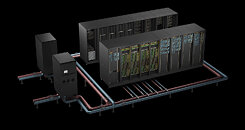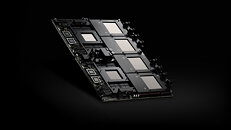
AMD's Next-Gen UDNA-Based Radeon GPUs to Use 80 Gbit/s HDMI 2.2
Just as the RDNA 4 rollout cycle is completing, the rumor mill for the next generation of Radeon GPUs is intensifying. According to @Kepler_L2 on X, a reliable leaker, AMD is equipping its next-generation UDNA-based GPUs with the HDMI 2.2 display protocol, capable of supporting 64 and 80 Gbit/s, meaning that the highest-end bandwidth of 96 Gbit/s (Ultra96) is not expected to arrive until the next generation. The HDMI Forum, the consortium behind the HDMI standard, officially released the HDMI 2.2 specifications in January during CES. The HDMI forum also foresees HDMI 2.2 cables hitting the shelves sometime in Q3 or Q4 of 2025, which means the rollout is near. However, AMD's next-generation GPUs will not utilize its entire feature spectrum in the coming GFX13 GPU architecture.
The HDMI 2.2 update introduces a future-proof Fixed Rate Link architecture that delivers up to 96 Gbps of bandwidth, enabling uncompressed 4K at 240 Hz or 8K at 60 Hz with full 4:4:4 chroma, and paving the way for even higher resolutions, such as 10K and 12K at 120 Hz. It accommodates both uncompressed and visually lossless compressed formats, as well as advanced chroma sampling options. This massive data throughput meets the growing demands of immersive audiovisual experiences from next-generation gaming and augmented and virtual reality to professional light-field displays, large-format digital signage, medical imaging, and machine-vision systems by doubling payload capacity every two to three years. The Ultra96 HDMI cable is designed to handle all HDMI 2.2 features. This cable is accompanied by the new Latency Indication Protocol, which ensures precise lip-sync and audio-video alignment across complex multi-hop setups involving receivers, soundbars, and other downstream devices.
The HDMI 2.2 update introduces a future-proof Fixed Rate Link architecture that delivers up to 96 Gbps of bandwidth, enabling uncompressed 4K at 240 Hz or 8K at 60 Hz with full 4:4:4 chroma, and paving the way for even higher resolutions, such as 10K and 12K at 120 Hz. It accommodates both uncompressed and visually lossless compressed formats, as well as advanced chroma sampling options. This massive data throughput meets the growing demands of immersive audiovisual experiences from next-generation gaming and augmented and virtual reality to professional light-field displays, large-format digital signage, medical imaging, and machine-vision systems by doubling payload capacity every two to three years. The Ultra96 HDMI cable is designed to handle all HDMI 2.2 features. This cable is accompanied by the new Latency Indication Protocol, which ensures precise lip-sync and audio-video alignment across complex multi-hop setups involving receivers, soundbars, and other downstream devices.
















































































